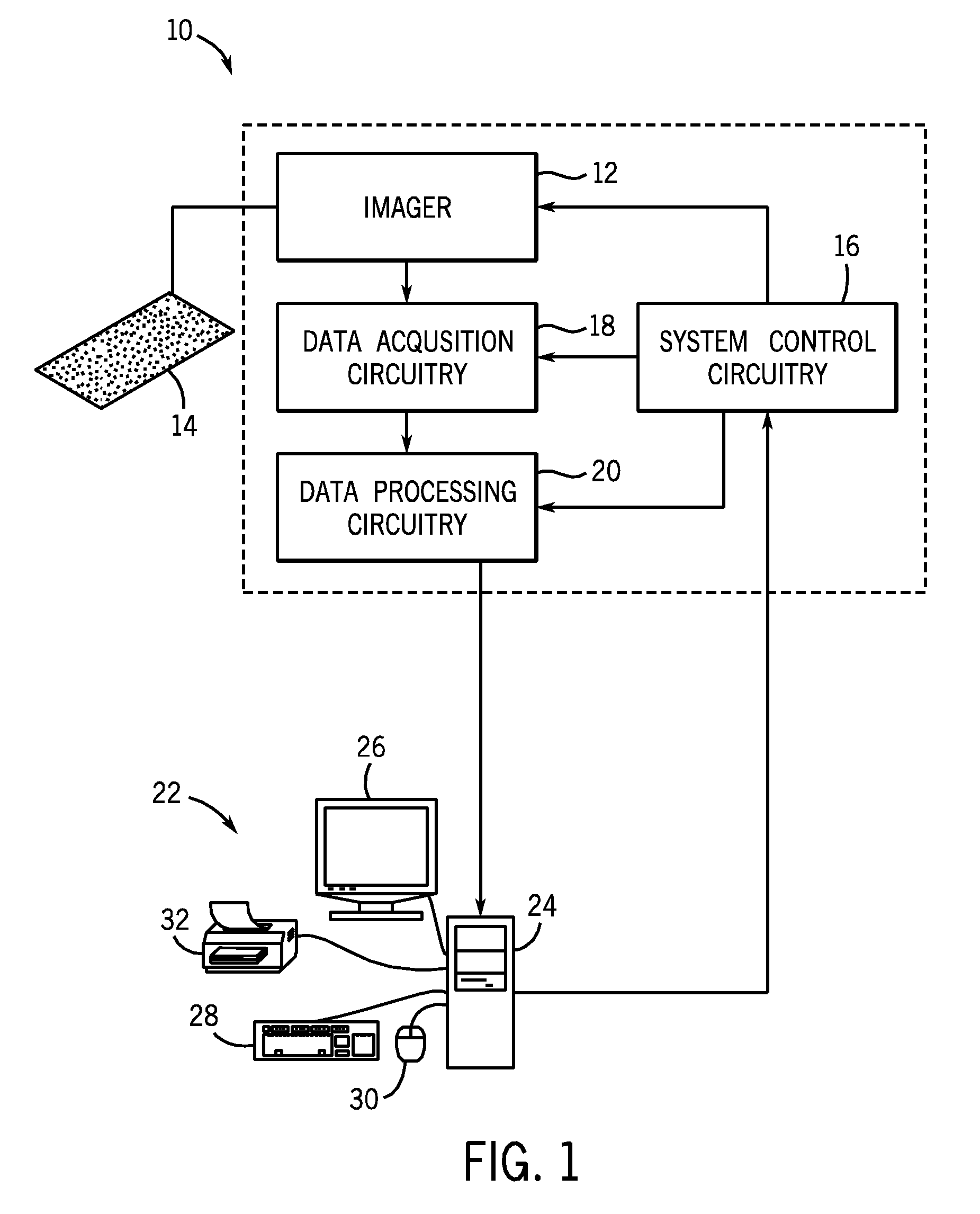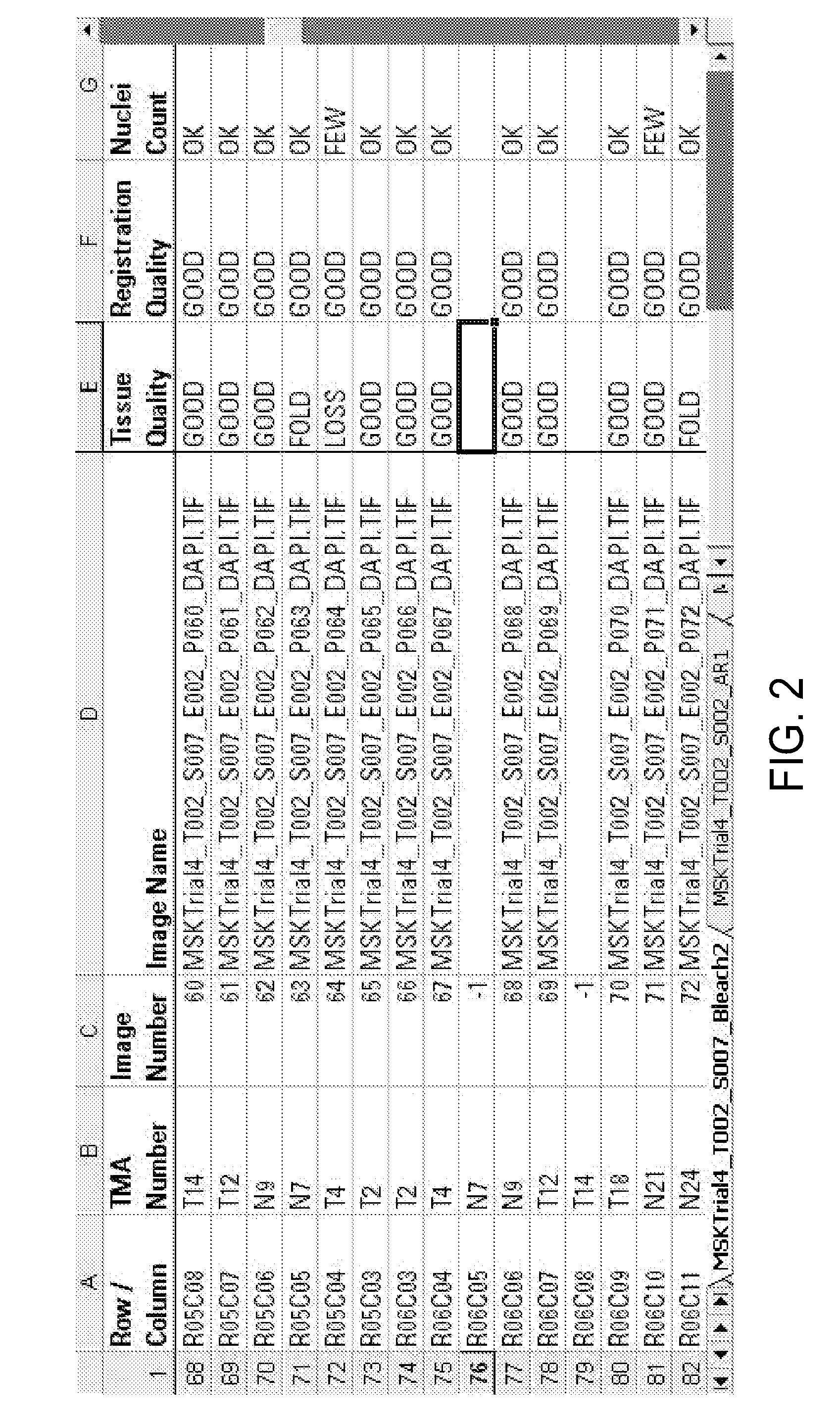Method and Apparatus for Detecting Irregularities in Tissue Microarrays
a tissue microarray and irregularity detection technology, applied in the field of image processing and image analysis, can solve the problems of high time-consuming step of sequential multiplexing study, etc., and achieve the effect of facilitating efficient verification, tissue folding and loss
- Summary
- Abstract
- Description
- Claims
- Application Information
AI Technical Summary
Benefits of technology
Problems solved by technology
Method used
Image
Examples
Embodiment Construction
[0029]The present techniques provide automated systems and methods for registering images of corresponding tissue spots in a TMA, detecting cases of registration failures, and / or re-initializing registration in the case of registration failure. The present techniques may reduce the incidence of individual validation of each tissue spot on a TMA. By providing a whole TMA image output, any tissue spot that failed to register may be annotated with a flag or other indicator. This output may allow an operator to scan an entire slide and quickly identify those tissue spots that may warrant additional validation and / or exclusion from further analysis.
[0030]The present techniques may use images of the tissue spots on a TMA and the relative x-y coordinates of each tissue spot as recorded by a microscope or other suitable image acquisition system. In certain embodiments, it is envisioned that the present techniques may be used in conjunction with previously acquired images, for example, digit...
PUM
| Property | Measurement | Unit |
|---|---|---|
| image processing | aaaaa | aaaaa |
| fluorescent in situ hybridization | aaaaa | aaaaa |
| time | aaaaa | aaaaa |
Abstract
Description
Claims
Application Information
 Login to View More
Login to View More - R&D
- Intellectual Property
- Life Sciences
- Materials
- Tech Scout
- Unparalleled Data Quality
- Higher Quality Content
- 60% Fewer Hallucinations
Browse by: Latest US Patents, China's latest patents, Technical Efficacy Thesaurus, Application Domain, Technology Topic, Popular Technical Reports.
© 2025 PatSnap. All rights reserved.Legal|Privacy policy|Modern Slavery Act Transparency Statement|Sitemap|About US| Contact US: help@patsnap.com



